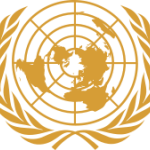- 産業: NGO
- Number of terms: 31364
- Number of blossaries: 0
- Company Profile:
The United Nations Organization (UNO), or simply United Nations (UN), is an international organization whose stated aims are facilitating cooperation in international law, international security, economic development, social progress, human rights, and the achieving of world peace.
Valuation used in environmental accounting to estimate the economic value of a natural resource and its depletion. It is defined as the actual market price of a natural resource output minus all marginal exploitation costs including a normal return to capital. see market valuation.
Industry:Environment
Reactive environmental protection. It includes (a) reduction or neutralization of residuals, (b) changes in the spatial distribution of residuals, (c) support of environmental assimilation and (d) restoration of ecosystems, landscape and so forth. See also environmental protection.
Industry:Environment
Measurement of radioactivity that expresses the variety of dose equivalents for different organs of the body as a single number. It is commonly referred to as a "dose", and is measured in sieverts. It provides an indication of the risk to health from any given exposure to radiation.
Industry:Environment
Advanced treatment process, following secondary treatment of waste water, that produces high-quality water. Tertiary treatment includes removal of nutrients such as phosphorus and nitrogen and practically all suspended and organic matter from waste water. See also secondary treatment.
Industry:Environment
Elements that occur in very small quantities in living organisms. These elements include lead, silver, iron, zinc, nickel, cobalt and manganese. Some trace elements are essential for life processes, while others are detrimental. Even beneficial elements may be toxic at higher levels.
Industry:Environment
Organic compounds that are by-products of petroleum refining, tanning, textile dyeing and so forth. They are germicides and act as disinfectants. They may produce taste and odour problems in low concentrations in water, and are toxic to aquatic and human life in higher concentrations.
Industry:Environment
Type of radiation comprising true rays of energy, in contrast to alpha and beta radiations. Its properties are similar to those of X-rays and other electromagnetic waves. It comprises the most penetrating waves of radiant nuclear energy but can be blocked by dense materials such as lead.
Industry:Environment
Cutting down of selected trees in a forest so that growth of other trees is not affected. This is done according to criteria regarding minimum tree size for harvesting, specifications of the number, spacing and size classes of residual trees per area, and allowable cut. See also creaming.
Industry:Environment
In environmental accounting, the environmentally adjusted concept of capital formation that accounts for depletion and degradation of natural capital. The concept may also include discoveries or transfers (from the environment into the economic system) of natural resources, and the effects of disasters and natural growth.
Industry:Environment
Concept adopted at the Third United Nations Conference on the Law of the Sea (1982), whereby a coastal State assumes jurisdiction over the exploration and exploitation of marine resources in its adjacent section of the continental shelf, taken to be a band extending 200 miles from the shore.
Industry:Environment
